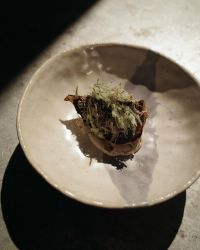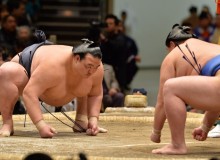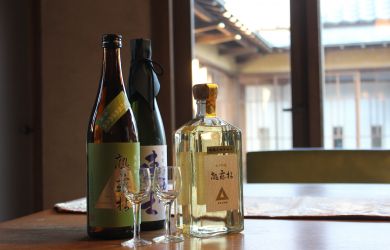
November 4, 2014
Musical Polymorphism
Shuta Hasunuma discusses Japan’s avant-garde arts
A revealing fact about Japan is that its avant-garde arts scene is often more widely acclaimed abroad than at home. From butoh dance to noise music to the post-war Gutai art movement, the biggest recognition often comes overseas.
“It’s frustrating that Japanese culture is often best presented, or artworks purchased, by Western fans and collectors,” says young musician Shuta Hasunuma. “The Japanese art scene is frequently late to recognize the value of movements like Gutai. There was a lot of activity in Japan in the ’60s but it took American curators to shine a spotlight on it. Japanese galleries simply follow in their wake.”
Happily, that’s not the case for Hasunuma, a self-taught composer of intricate electronic and chamber music scores whose works are acclaimed both at home and abroad. Hasunuma speaks from New York, where he’s on a six-month Asian Cultural Council study fellowship. “NYC has a greater variety and deeper history of experimental music than Tokyo,” he explains about his overseas residency. “So I wanted to experience it for myself.”
Hasunuma had what he calls a typical upbringing in the home of a Saitama salaryman. There was no inkling of his progressive leanings in his early studies on electone, or later fondness for J-pop and then American skate punk.
“I never went to music school,” Hasunuma says about his background. “I thought about applying to a music college—but there are good and bad points to being taught. I felt like even if I went to a music college, I probably wouldn’t be a very good student, so I decided to do music myself. I did go to college, but I just had my nose in art books the whole time.”
Hasunuma’s explorations gradually led him to electronic music and classical composers. Early recognition came for his subtle electronic compositions, which are often constructed around field recordings. “I listened to a lot of sampled pop music, but I like the field recording to remain prominent in the piece,” he says about his working process. “John Cage is definitely a big influence, and the ‘happenings’ of the ’60s. But I’m also influenced by what was happening in Japan. Cage came to Japan, and there was a relationship with Japanese composers like Toru Takemitsu.”
More recently, Hasunuma shifted his focus away from the laptop to live instruments. His Philharmonic Orchestra strides a fine line between so-called “new music” and pop. The group has generated substantial praise, mounting stages such as Tokyo Opera City and Spiral Hall.
“I was approached with an offer to do a large-scale performance,” he recalls. “I rearranged all my pieces for live instruments. We would perform once a year, but as our repertoire increased, we ended up releasing an album and doing a nationwide tour. As a composer, I’m interested in the pitches and timbres of instruments, and pushing the limits of instruments. Field recordings are limitless, but with my current work I’m exploring expression inside limits. Still, when you have a large ensemble, then you have a lot of colors to work with.”
Hasunuma says if he has the means, he wants to investigate as wide a range of expression as possible. Given that his music strikes home with fans both of avant-garde composers like Toru Takemitsu and poppier figures such as Ryuichi Sakamoto, and that his talent has been recognized with an elite fellowship, those means look increasingly within reach.
“For me, music teaches us how to live,” he concludes. “I’m always learning from it, and it’s a way for me to know the world. It’s also my livelihood. I feel really lucky.”





